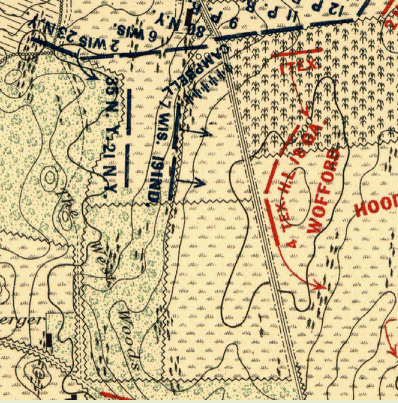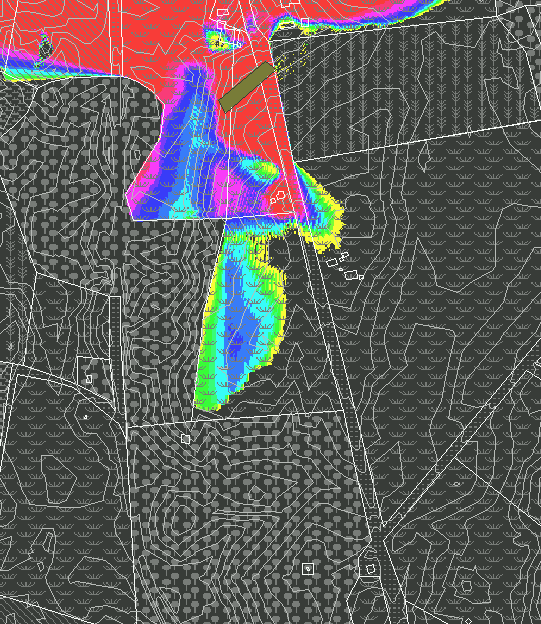
Line of Sight Analysis For Battery B, Fourth US Artillery
Line of Sight (LOS) Analysis provides the means to determine what portions of the battlefield are visible from a given position on the battlefield. Viewregion LOS allows us to determine what portions of the battlefield are visible from a region of points on the battlefield. Here, we will consider the LOS of the position occupied by Battery B, Fourth US artillery, where it made its stand against Hood's Texans near the Miller Cornfield.
The position occupied by Battery B at this critical moment of the battle is found from the Atlas of the Battlefield of Antietam, plate 4, 7:20 am, detail shown in Figure X.1. The battery's position is marked 'Campbell', for the commander of the battery.

|
| Figure X.1 |
Figure X.2 shows the viewregion LOS of this region, where the viewregion is defined as the position occupied by the battery, shown as the brown shaded rectangular region.

|
|
|||
| (a) | (b) | |||
| Figure X.2 | ||||
Figure X.2 (a) is a color coded LOS viewregion LOS map that illustrates what portions of the battlefield are visible from Battery B's position. X.2 (b) is a color key used to interpret the colors found in X.2 (a). Areas in black are invisible from Battery B's position.
From Figure X.2, the southward LOS--the direction the battery is facing--is limited. For the purposes of this study, trees and corn are considered to provide concealment, and therefore block LOS. As a result, the Miller cornfield and the West Woods tend to block LOS to both the east and west. Furthermore, the ground rises steeply to the south, blocking LOS in that direction.
This analysis would conclude the position is a precarious one, particularly for artillery, which depends on longer range visibility to avoid being overrun; the record bears this out, as the fight is described as a desperate one. It is perhaps unusual for artillery to become so closely engaged with infantry. In this case, the shape of the ground is largely responsible: both sides are concealed from each other until they approach very closely, where they finally emerge in front of each other.